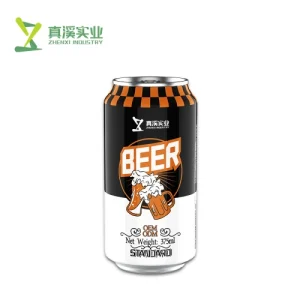The Journey from Can to New Can
The recycling process for aluminum packaging cans is a showcase of efficiency and sustainability. As one of the most recyclable materials on the market, aluminum undergoes a dynamic process to transform from used can to new can, sometimes in as little as 60 days. This recycling loop not only conserves resources but also reduces environmental impact significantly.
Collection and Sorting
The first step in recycling aluminum cans is collection. These cans are collected via curbside recycling programs, deposit centers, and recycling drives. Once collected, the cans are transported to material recovery facilities where they are sorted from other materials. Advanced sorting technology such as eddy currents, which repel aluminum from other types of waste, is commonly used to separate out the aluminum cans with high efficiency.
Cleaning and Shredding
After sorting, the aluminum cans are cleaned to remove any liquid residue or other contaminants. Following cleaning, the cans are shredded into small pieces. This shredding process reduces the volume of the material and prepares it for melting, making it easier and more energy-efficient to process.
Melting and Removing Impurities
The shredded aluminum pieces are then loaded into a large furnace and heated to approximately 750 degrees Celsius (about 1382 degrees Fahrenheit). The high temperature melts the aluminum, which is then poured into molds to form large ingots. During this melting process, impurities are separated from the molten aluminum through a process called drossing, where the impurities rise to the surface of the molten aluminum and are skimmed off.
Rolling and Manufacturing New Cans
Once the aluminum has been cast into ingots, these large blocks are rolled out into thin sheets. These sheets are the raw material for producing new Aluminum Packaging Cans. The sheets are cut, shaped, and formed into new cans in a high-speed manufacturing process. The new cans can then be filled, sealed, and shipped to retailers, completing the recycling loop.

Energy Efficiency and Environmental Impact
Recycling aluminum cans is highly energy efficient. Using recycled aluminum saves up to 95% of the energy required to create the same amount of aluminum from its raw material, bauxite. This efficiency translates into significant environmental benefits, including reduced greenhouse gas emissions, conservation of natural resources, and less mining waste.
Continuous Innovation in Recycling Technology
The aluminum recycling industry continues to innovate, seeking ways to improve the efficiency and effectiveness of the recycling process. Technological advancements in sorting and melting are reducing energy consumption and increasing the amount of aluminum that can be recovered and reused.
Encouraging Consumer Participation
The success of aluminum recycling relies heavily on consumer participation. By choosing products packaged in aluminum and participating diligently in recycling programs, consumers can play a crucial role in sustaining the aluminum recycling loop. Educating the public about the benefits of recycling aluminum cans is vital for maintaining high recycling rates and ensuring that aluminum remains a pillar of sustainable packaging solutions.
In Conclusion
Aluminum can recycling is a robust example of a circular economy at work. It showcases how thoughtful management of resources can lead to substantial environmental and economic benefits. As industries and consumers alike push for more sustainable practices, the role of aluminum recycling becomes ever more critical in our global efforts to reduce waste and promote sustainability.
